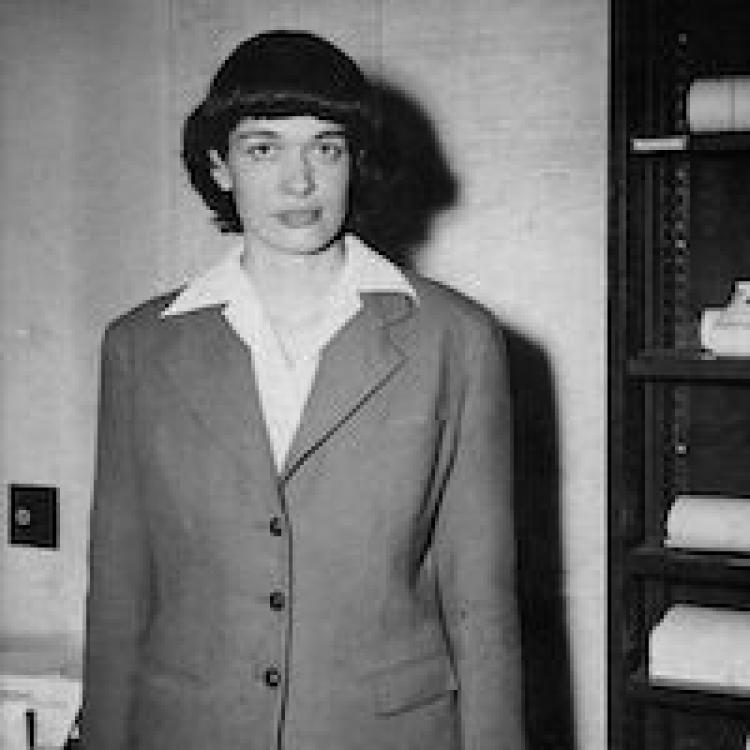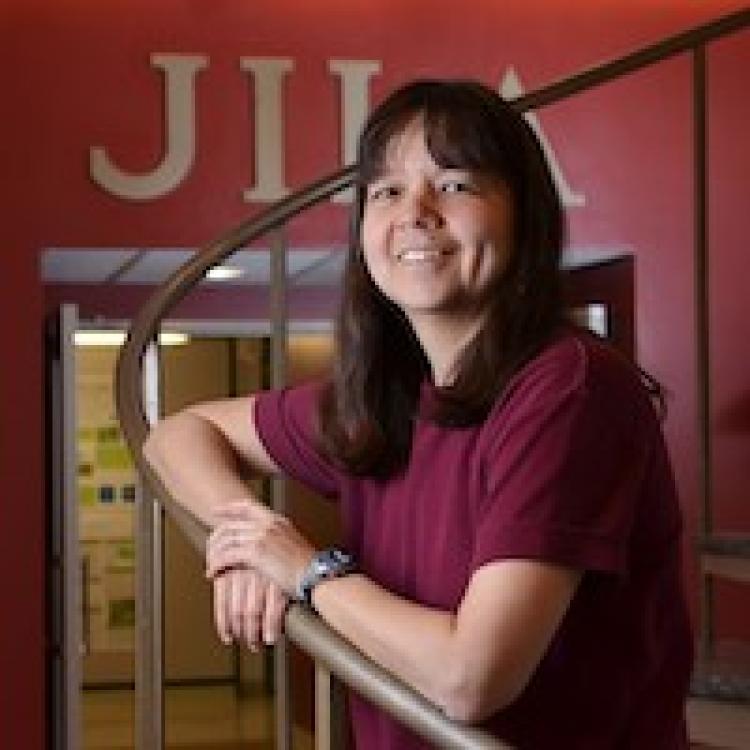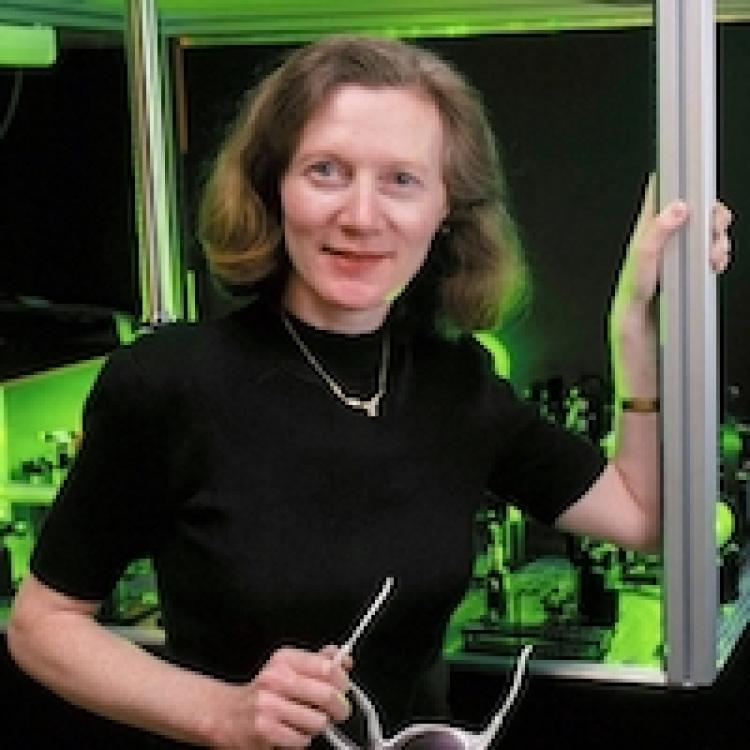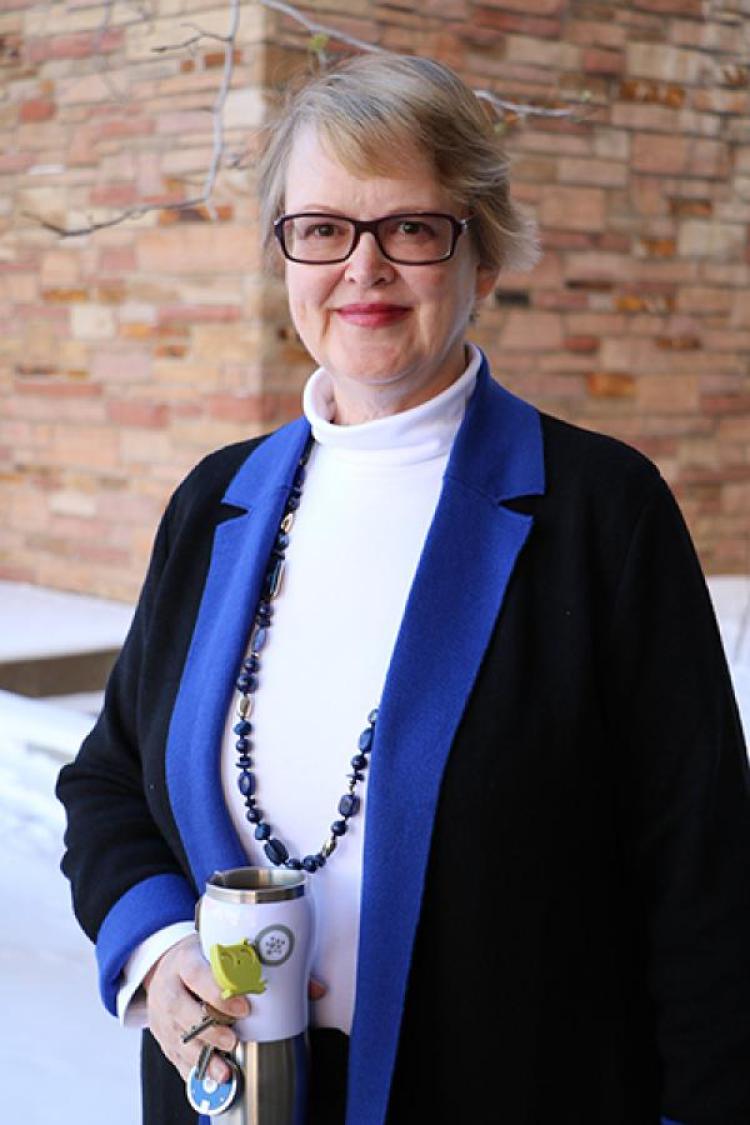What will it take to close the gender gap in physics? Patricia Rankin is working to find out
Banner image: CU Boulder students sit in on a physics lab class. (Credit: CU Boulder)
When Patricia Rankin was a young scientist in the 1980s, colleagues and acquaintances often told her that she didn’t look like a physicist.
At the time, Rankin assumed that they were complimenting her sense of style.
“I thought, ‘That’s because I dress well and don’t have a pocket protector,’” said Rankin, now a professor in the Department of Physics at CU Boulder. “I remember being 40 and realizing that they were actually saying, ‘Tricia, you’re a woman, and we don’t know many women physicists.’”
Rankin is telling a different story today. She’s dedicating the rest of her career to showing that she does look like a physicist—and so do countless young women, and especially women of color, who are just getting started in the field.
It’s a passion project that led her to become one of 17 committee members who provided advice and inputs to a report from the National Academy of Sciences published in March. The effort seeks to lay out new strategies for reversing the disparities between men and women in physics and many other scientific fields.
Now 63, Rankin is reflecting on her own evolution as a woman in science—and what it might take to see more physicists who don’t fit the all-male, all-white stereotypes, pocket protectors or no.
“I think we are at a time when we can actually make a big difference in this area because a lot of things are aligning across society,” Rankin said.
When it comes to the big challenges facing the world, she added, “you’re not going to solve them with only half the population, and you’re certainly not going to solve that with a vanishingly small demographic.”

Leona Woods Libby
Patricia Rankin was only the second woman to serve as a faculty member in the Department of Physics at CU Boulder. Leona Woods Libby was the first. Born in 1919, she played a prominent role in the Manhattan Project and later joined the University of Colorado from 1964 to 1970. Learn more...

Deborah Jin
Deborah Jin served as an adjoint professor of physics at CU Boulder and a JILA fellow. She was a pioneer in the field of ultracold atomic gases and led the first team to generate a new state of matter called a fermionic condensate. Jin passed away in 2016. Learn more...

Margaret Murnane
Margaret Murnane, a distinguished professor of physics and JILA fellow, is a leader in the field of laser science. Along with her husband and collaborator Henry Kapteyn, she developed the world’s first tabletop X-ray laser. Murnane was named a MacArthur “Genius” Fellow in 2000. Learn more...
Why women leave
In many ways, Rankin’s life as a young woman scientist was a relatively charmed one. Originally from the United Kingdom, she attended an all-girls school from ages 11 to 18 where, she said, it never occurred to her that women might not be welcome in the sciences.
“I was in an environment where all the people studying physics were women,” Rankin said.
She went on to earn her PhD in physics from Imperial College London, then joined the CU Boulder faculty in 1988 as the only woman in the physics department. It was a rare success story.
As Rankin was setting up her lab in CU Boulder, women were earning just 10% of the PhDs awarded in physics in the United States, according to the American Physical Society. Today, the numbers aren’t much better. In 2017, fewer than 20% of all doctoral degrees in physics went to women—a far cry away from the roughly 40% in fields like earth sciences and chemistry.
There are a lot of reasons for that blatant shortfall, Rankin explained.
Some of it comes down to culture. Physics, for example, has long held a reputation as being a pursuit that’s suited only for geniuses: You’re either born a physicist, or you’re not. Research suggests that such an attitude can disproportionately discourage young women and members of other underrepresented groups from getting into the field.
“If you believe that to succeed in physics you have to be a genius, that belief is going to attract a different group of people than if you believe you can succeed in physics by working hard and, ultimately, getting through it,” Rankin said.
Sexism and sexual harassment also play a big role, she added. In 2017, for example, a team of researchers conducted a survey of hundreds of undergraduate women studying physics. Nearly 75% of respondents reported that they had experienced some form of sexual harassment in their careers.
“For me, that report was a wake-up call,” Rankin said. “It is clearly not acceptable to have that level of sexual harassment in any field.”
Recently, Rankin said, many institutions have tried to fix this gap by providing women with skills to survive in a male-dominated world—a strategy that Rankin calls “the fix-the-women era.”
She thinks it’s time for a different approach.
“I think we’re seeing a switch now to the realization that women are not just randomly dropping out of science,” Rankin said. “They’re dropping out because of the accumulation of negative experiences.”
A time for solutions
Rankin would like to do her part to dismantle that gauntlet that women scientists have to run before she retires.
The new report, called “Promising Practices for Addressing the Underrepresentation of Women in Science, Engineering, and Medicine: Opening Doors,” is a step in the right direction, she said. It lays out a series of concrete actions that scientific institutions can take to fix the lack of women in various fields—for good. They include everything from making spaces available for employees to pump breast milk in the workplace to ensuring that all scientists receive living wages.
“I think this is a report that smart people will be paying attention to, as a start” Rankin said. “I am hoping that future discussions will highlight the role of leadership and accountability in changing the situation.”
She added that one of the simplest solutions may be to conduct gender-blind hiring: During the first rounds of the hiring process, in other words, employers are able to see the qualifications, but not names, of their applicants.
It’s also an issue that CU Boulder is taking seriously, Rankin added. Both the college of Arts and Sciences and Engineering and Applied Science have made recruiting women students and faculty members a priority. In 2019, the university also released its Inclusion, Diversity & Excellence in Academics (IDEA) Plan with the goal of “making excellence inclusive at all levels.”
One of the biggest hurdles to nationwide success may come down to honest conversations, Rankin said. She feels that it’s time for faculty members to start talking openly about difficult issues like sexism, racism, homophobia and transphobia in meetings—even if it risks ruffling a few feathers.
“If you don’t have those conversations,” Rankin said, “you don’t get things on the table, and you can’t discuss them at all.”
For now, she is ready to see the culture of science change. Rankin has waited long enough.
“Over the past few years, I’ve moved toward thinking that the slow and steady approach is not going to get us there anymore,” she said.



